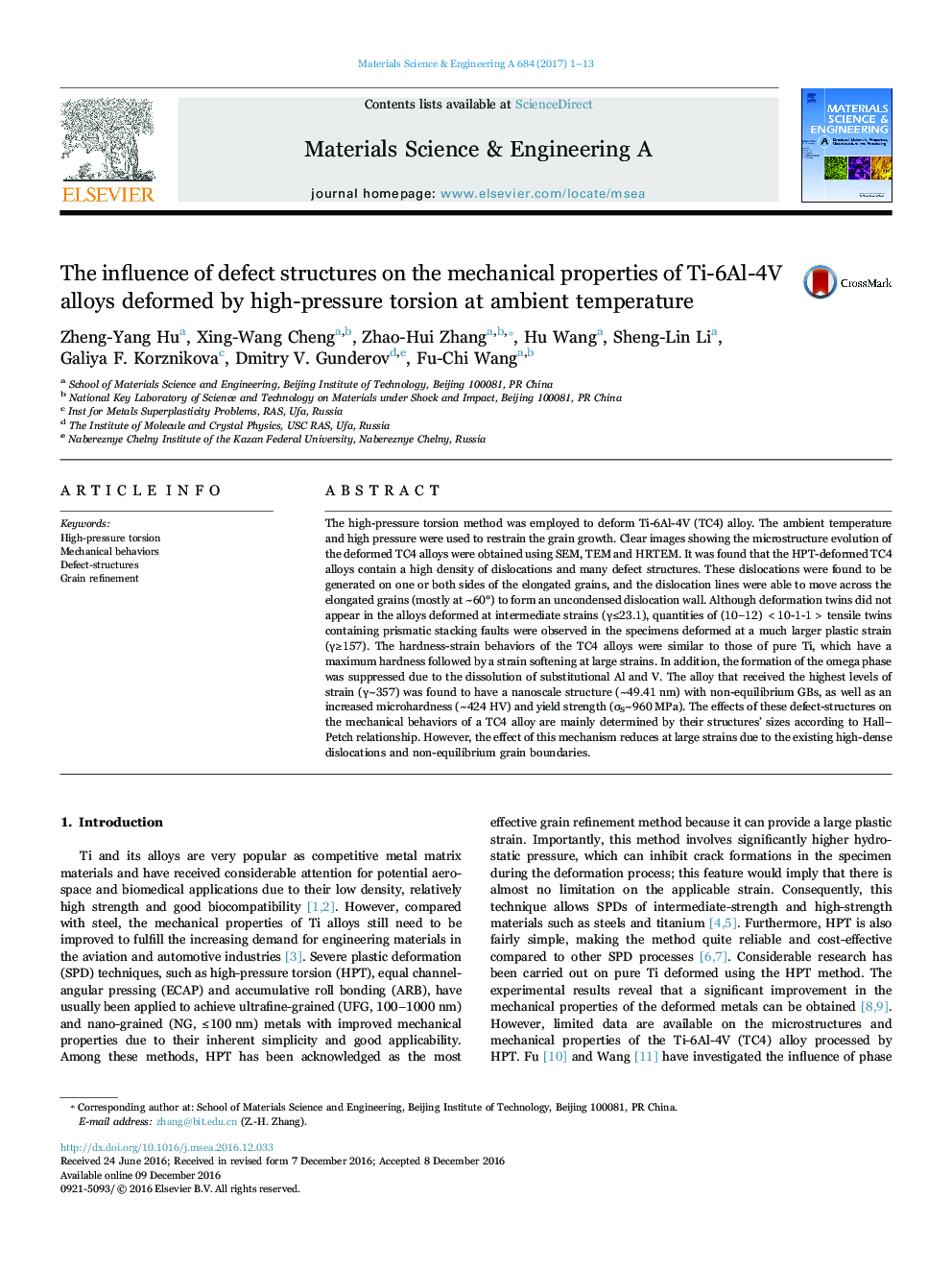| کد مقاله | کد نشریه | سال انتشار | مقاله انگلیسی | نسخه تمام متن |
|---|---|---|---|---|
| 5456282 | 1514659 | 2017 | 13 صفحه PDF | دانلود رایگان |
عنوان انگلیسی مقاله ISI
The influence of defect structures on the mechanical properties of Ti-6Al-4V alloys deformed by high-pressure torsion at ambient temperature
دانلود مقاله + سفارش ترجمه
دانلود مقاله ISI انگلیسی
رایگان برای ایرانیان
کلمات کلیدی
موضوعات مرتبط
مهندسی و علوم پایه
مهندسی مواد
دانش مواد (عمومی)
پیش نمایش صفحه اول مقاله

چکیده انگلیسی
The high-pressure torsion method was employed to deform Ti-6Al-4V (TC4) alloy. The ambient temperature and high pressure were used to restrain the grain growth. Clear images showing the microstructure evolution of the deformed TC4 alloys were obtained using SEM, TEM and HRTEM. It was found that the HPT-deformed TC4 alloys contain a high density of dislocations and many defect structures. These dislocations were found to be generated on one or both sides of the elongated grains, and the dislocation lines were able to move across the elongated grains (mostly at ~60°) to form an uncondensed dislocation wall. Although deformation twins did not appear in the alloys deformed at intermediate strains (γâ¤23.1), quantities of (10â12) <10-1-1> tensile twins containing prismatic stacking faults were observed in the specimens deformed at a much larger plastic strain (γâ¥157). The hardness-strain behaviors of the TC4 alloys were similar to those of pure Ti, which have a maximum hardness followed by a strain softening at large strains. In addition, the formation of the omega phase was suppressed due to the dissolution of substitutional Al and V. The alloy that received the highest levels of strain (γ~357) was found to have a nanoscale structure (~49.41 nm) with non-equilibrium GBs, as well as an increased microhardness (~424 HV) and yield strength (ÏS~960 MPa). The effects of these defect-structures on the mechanical behaviors of a TC4 alloy are mainly determined by their structures' sizes according to Hall-Petch relationship. However, the effect of this mechanism reduces at large strains due to the existing high-dense dislocations and non-equilibrium grain boundaries.
ناشر
Database: Elsevier - ScienceDirect (ساینس دایرکت)
Journal: Materials Science and Engineering: A - Volume 684, 27 January 2017, Pages 1-13
Journal: Materials Science and Engineering: A - Volume 684, 27 January 2017, Pages 1-13
نویسندگان
Zheng-Yang Hu, Xing-Wang Cheng, Zhao-Hui Zhang, Hu Wang, Sheng-Lin Li, Galiya F. Korznikova, Dmitry V. Gunderov, Fu-Chi Wang,